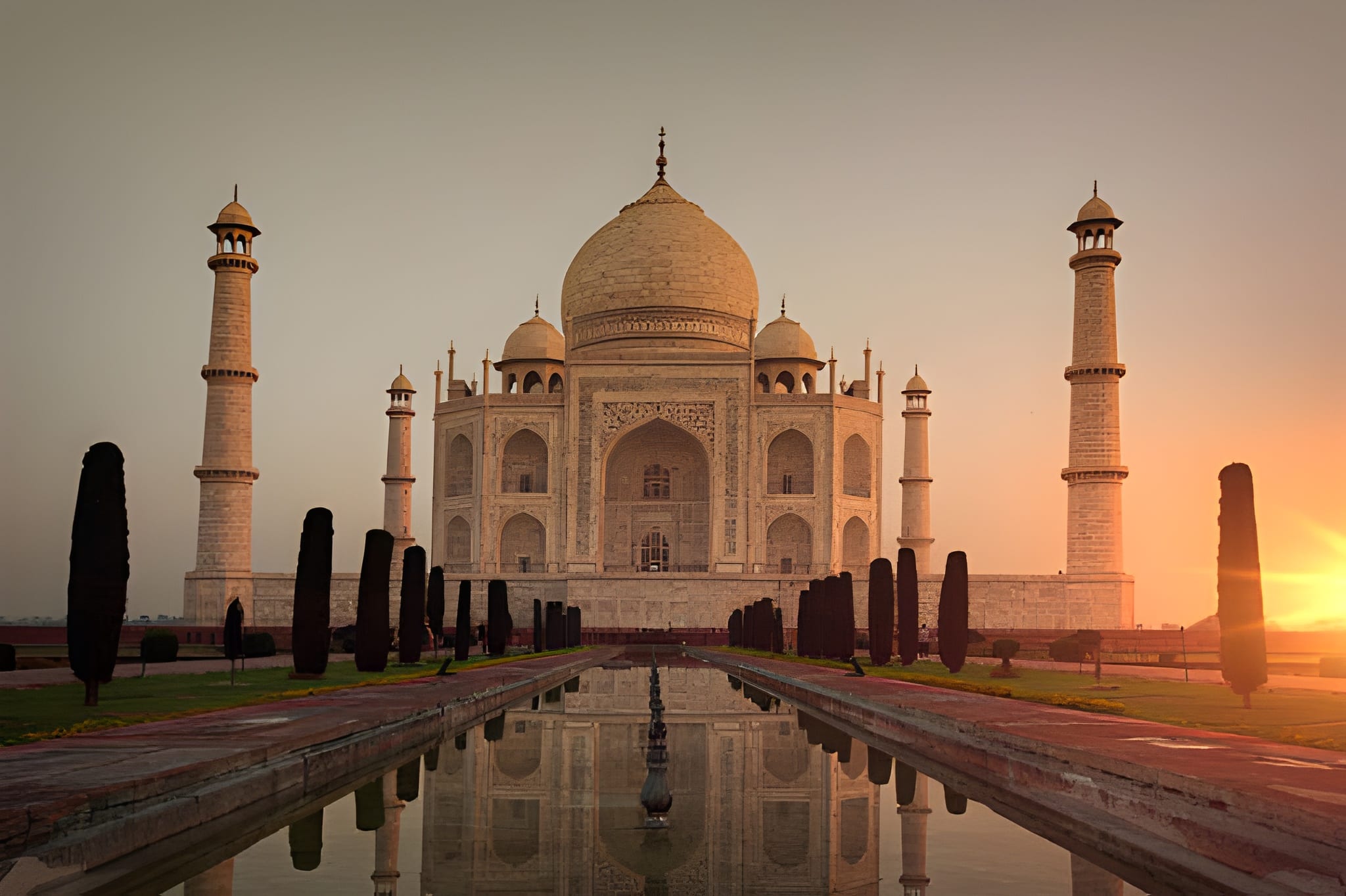The Taj Mahal stands as one of the greatest symbols of love in the world—a timeless monument built by the Mughal Emperor Shah Jahan in memory of his beloved wife, Mumtaz Mahal. But have you ever wondered why Shah Jahan chose Agra as the site for this magnificent masterpiece?
While the beauty of the Taj Mahal is known to all, the story of why it stands on the banks of the Yamuna River in Agra is equally fascinating. Let’s explore the historical, architectural, and emotional reasons that make Agra the perfect home for the Taj Mahal.
1. Agra: The Heart of the Mughal Empire
During Shah Jahan’s reign in the 17th century, Agra was the capital of the Mughal Empire. It was not just a political center but also a thriving hub of art, culture, and trade. The city already housed architectural marvels like the Agra Fort and the tomb of Itimad-ud-Daulah, which inspired many design elements later seen in the Taj Mahal.
Choosing Agra made practical sense for Shah Jahan—it was where the empire’s finest architects, artisans, and craftsmen were based. This made the city an ideal place to construct a monument of unparalleled grandeur and beauty.
2. The Perfect Location: The Yamuna River
Another key reason Shah Jahan selected Agra was the serene flow of the Yamuna River. The emperor wanted the Taj Mahal to stand in harmony with nature, and the river offered both beauty and balance. Its calm waters provided a natural reflection of the white marble mausoleum, enhancing its ethereal charm.
Moreover, the Yamuna played a vital role in the monument’s engineering. The river helped stabilize the foundation of the Taj Mahal—built on a specially designed well foundation to prevent sinking. The constant moisture from the river ensured that the monument remained structurally sound over centuries.
3. Symbolism and Legacy
For Shah Jahan, the Taj Mahal was not just a tomb—it was an eternal expression of love and divine beauty. Placing it in Agra, the city most associated with the Mughal dynasty’s peak, gave it a symbolic power that extended beyond architecture.
By situating the monument near the Agra Fort—where he spent his final years under house arrest, gazing across the river at the tomb of his beloved—Shah Jahan ensured that his personal story and legacy would forever remain intertwined with Agra.
4. Accessibility and Grandeur
Agra was strategically located along major trade and travel routes of the Mughal era, connecting Delhi, Rajasthan, and the Deccan. This made it easy to transport rare materials and gemstones from across India and beyond.
White marble from Makrana in Rajasthan, jasper from Punjab, jade from China, and turquoise from Tibet—all arrived in Agra to bring Shah Jahan’s dream to life. The city’s accessibility allowed the emperor to coordinate a massive workforce of over 20,000 artisans with precision.
5. Agra: A City of Eternal Love
Today, centuries later, Agra continues to be known worldwide because of the Taj Mahal. Millions of visitors travel from around the globe each year to witness the monument that embodies eternal love. When you visit Agra, you’re not just exploring a historical site—you’re stepping into a story that changed the course of art and architecture forever.
Visit the Taj Mahal with Ease
If you’re planning to see this wonder for yourself, make your journey smooth and memorable by booking your tickets online at Ticketstajmahal.com. Our platform makes it easy to secure your entry tickets, skip long queues, and enjoy a seamless visit to one of the world’s most breathtaking monuments.










Comment (0)